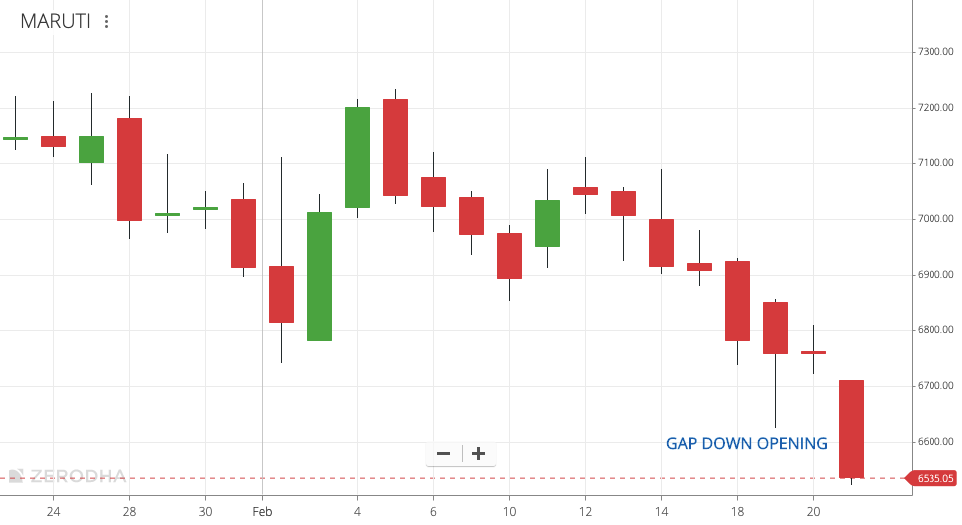When a stock opens lower then the previous day’s price, it’s called a ‘gap down opening’. A ‘gap down opening’ is a negative sign for a stock.
For example, if a stock closes at ₹ 300 on Monday and opens at ₹ 280 on Tuesday, there is a gap of ₹ 20 between the price on the previous day and the opening price on the next day.
When this gap is on the lower side, it’s called a ‘gap down opening’.
Let’s take a real example of Maruti:

On 23rd February 2020, Maruti closed at ₹ 6757 per share. On the next day (24 Feb), the stock opened at ₹ 6710. There was a gap of ₹ 47 between the closing price on the previous day and the opening price on the next day.
When this happens, we say ‘Maruti opened gap down’.
But why did Maruti open lower?
Gap Down opening can happen due to various reasons – both known and unknown. It could be because of news, negative market sentiments, budget announcements, negative financial results and several others reasons.
There is no clear reason why Maruti opened gap down on 24th February. Global sentiments were negative due to fear of coronavirus spreading to other parts of the world.
Markets around the world had fallen. Both Nifty 50 and Sensex fell by nearly 2%.
When the general sentiment of the market is weak, stocks like Maruti – which is a part of both Nifty and Sensex – can also fall. This could be the one of the main reasons why the stock opened gap down and fell further down.
Partial Gap Down and Full Gap Down
Gap Downs can further be divided into two categories:
- Partial Gap Down: When the opening price is lower than the ‘closing’ price on the previous day.
- Full Gap Down: When the opening price is lower than the ‘lowest’ price of the previous day.


Leave a Comment